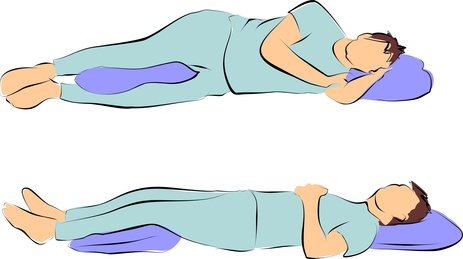Positional sleep apnea therapy
by Dror
Posted on 23-03-2020 06:00 PM

Positional obstructive sleep apnea
Obstructive sleep apnea is a major health condition identified by repeated stopping or slowing of breathing due to air passage collapse. When the soft tissues of the upper air passage and tongue loosen up during sleep, obstructive sleep apnea occurs. When the muscles and tissues relax, they can obstruct the circulation of air into the lungs. This can happen numerous times while you sleep, reducing your quality of sleep and making you feel exhausted during the day.
What is Positional Sleep apnea?
Positional obstructive sleep apnea (POSA) takes place when most of apneic occasions take place when a person remains in the supine sleep position, which is lying flat on their back. The upper air passage is more likely to loosen up or collapse when somebody is in the supine sleep position. The shape and size of your upper airway are also changed when you are supine. This combined with gravity increases the possibility of obstructing the air passage.
As many as 50% of obstructive sleep apnea sufferers have positional obstructive sleep apnea, which implies that their symptoms are even worse depending on their sleeping position.Even individuals with central sleep apnea are impacted by their sleeping position. When the patient changed sleeping position, a research study in 2005 found that their apnea-hypopnea index (AHI) was reduced by 50%. This means that their apneas (pauses in breath) reduced in frequency and length merely by sleeping differently.Turns out there is, in fact, a finest sleeping position for sleep apnea
The Risk of untreated Positional Obstructive Sleep apnea
The repeated low oxygen levels, raised blood pressure, and heart rate can wreak havoc on the body, straining the circulatory system and the heart.People with untreated sleep apnea including POSA have an increased risk of the following:
- Stroke: Apneic occasions trigger an increase in blood pressure. Ultimately, the nocturnal increase in blood pressure might persist into the daytime and result in hypertension, which is a danger element for a stroke.
- Heart Attack: Evidence exists that people with neglected sleep apnea might establish increased arterial tightness and have less heart rate irregularity, which can raise the danger of a heart attack.
- Type 2 Diabetes: Sleep apnea is associated with an increased danger of developing type 2 diabetes. Being overweight is a threat factor for both OSA and type 2 diabetes. According to research study, OSA is connected to glucose intolerance and insulin resistance independent of obesity. The prevalence of sleep apnea in individuals with type 2 diabetes has to do with 71 percent.
Positional sleep apnea treatment Option
CPAP machine is considered the gold common sleep apnea treatment. Patients with positional sleep apnea often don't do well with fixed-pressure CPAP. This is because they typically need a really low pressure when they are oversleeping the non-supine position but when they roll onto their backs, they require more pressure to keep the air passage open.
Philips Nightbalance Lunoa is a sleep position treatment option for patients with positional obstructive sleep apnea. Night balance Lunoa is a mask-free device that is used around the chest in a soft, adjustable belt. Over the course of the night, it provides gentle vibrations to encourage a shift from sleeping on your back to sleeping on your side. It monitors your sleep positions and changes the intensity of the vibrations as required, without interrupting your sleep.